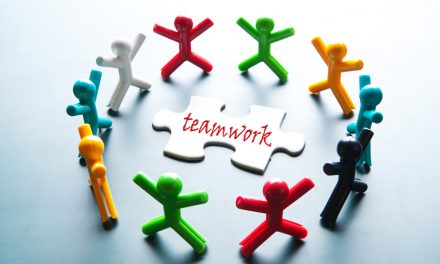Team building is a tool that involves the application of practical group activities, using playful and interactive dynamics to strengthen the involvement of the members of a staff team, while also making it possible to improve the relationship with the different teams within a company, aiming to have more engaged professionals, who know how to work as a team, thus achieving more consistent results.
Through team building, the team can develop more harmonic relationships, with more dynamic interactions, generating new learning experiences that offer more lasting results and effects, leading employees to develop better self-knowledge.
Among the main benefits offered by the dynamics applied to team building, we can consider:
- Increase team morale and develop leadership skills
- Increased creativity through the breaking of barriers
- A clearer definition of goals and targets for each employee
- Improvement in business processes and procedures
- Improved productivity within the organization
- Further analysis of the strengths and weaknesses of each employee and teams
- Greater ability to solve problems
Dynamics that can be applied in team building
There are numerous group dynamics that can be applied during team building meetings. Among them, we highlight some specific ones:
1. Stimulating the interaction and formation of new groups
A dynamic is an activity that must be performed in a group. By allowing employees to create their own teams, they will most likely meet with people they already work with, which will not allow them to achieve the goal of interaction. The suggestion of this dynamic is precisely to create new interactions and form new groups.
The first phase is to ask everyone to form a queue, using the month of birth of each collaborator, getting first who is born in January and, finally, those born in December.
This step is for everyone to start the process of interaction since they must know the month of birth of each one and put himself in its proper place in the queue.
The organizer must then follow the month-of-birth order to separate all members while maintaining the required amount for the other activities. Thus, it becomes easier to generate interaction between employees who do not work together.
2. Dynamics to break the ice
It is normal that, at the beginning of the team building activities, the members are half distanced. To break the ice, it is necessary to create small groups, with a maximum of 5 people, asking them to discover things in common. The information in common should not be those already known, such as profession, position or section, but personal things.
In addition, each member must also find a characteristic that is unique in the group. The goal is to get all employees closer, getting to know each other better.
3. Promoting Healthier Discussions
The dynamic will require separation into groups with at least 6 participants each. Each group should be positioned in a circle and each one of them should have a topic to start a discussion about the subject.
Some rules should be followed:
- Each participant has his turn to speak, without any order, that is, whoever has the will can speak first
- When you finish your presentation, each participant should make a positive signal with the hand
- Anyone who has already manifested can only speak again after everyone is doing the positive sign;
- After the first round, members should talk again about the same topic.
The goal is that, in an average of 5 minutes, everyone can express their opinions, generating more interaction for professional discussions.
Where to apply team building activities
Team building activities can be varied, using a whole day or even a few days. Ideally, these activities occur outside the company environment, in a remote and totally different place, such as a farm or a hotel.
It is desired that all activities be integrated and have a specific theme. Thus, when the team building is done in a single day, the employees must be gathered in the company and taken to the place where the activities will be carried out.
For the organizer, it is possible to apply the activities of group dynamics and to intercalate with sports games, such as football or volleyball, or some preferred by the collaborators, leaving this activity to the will of each one.
Group dynamics activities in team building help the employee better understand their position within the company and its importance to the team as a whole.





